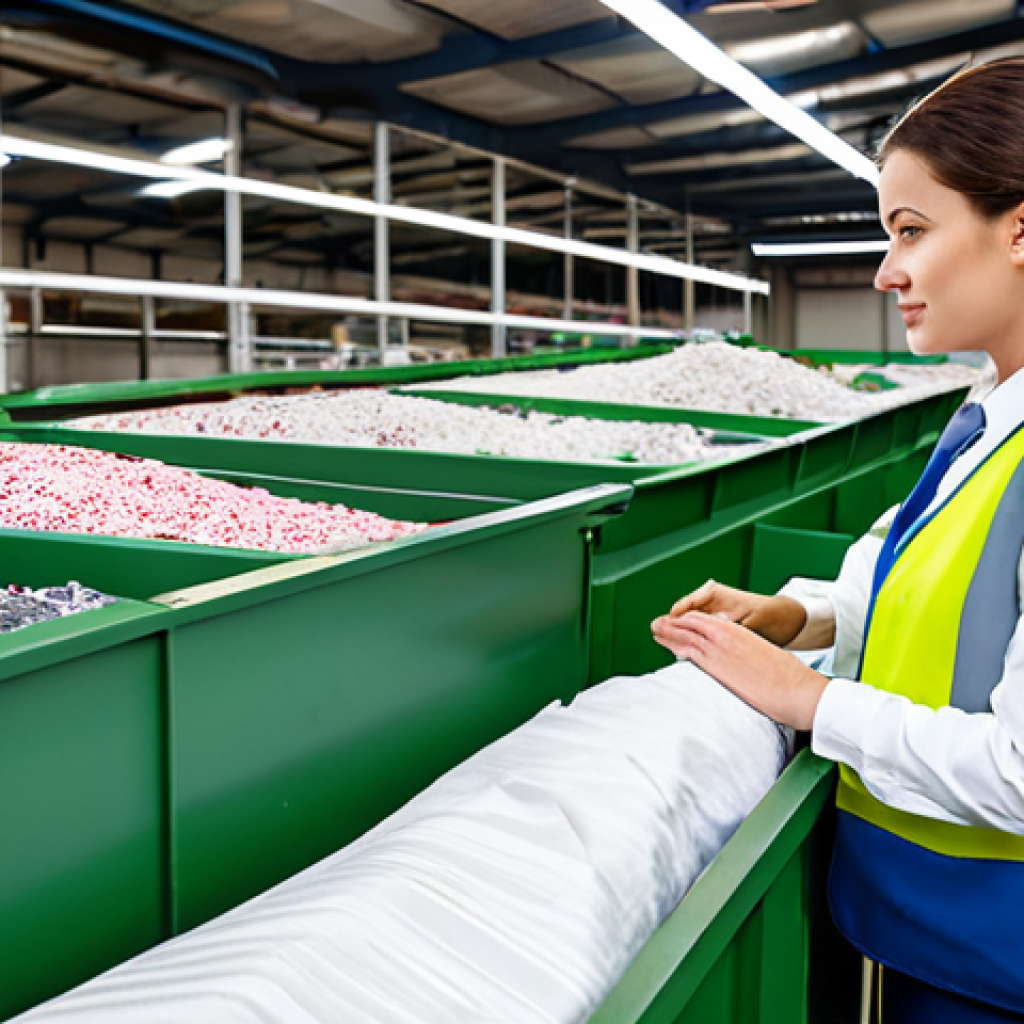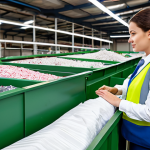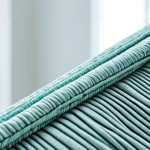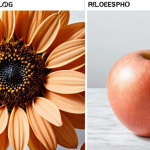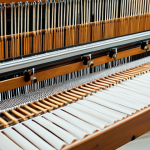Have you ever just stood in front of your overflowing closet, wondering where all those clothes eventually go? It wasn’t until I started really digging into the world of textiles that the sheer scale of our consumption, and frankly, our waste, truly hit me.
I mean, we love our fashion, right? But the dirty secret is, a staggering amount of what we wear ends up as landfill, sometimes after just a few uses.
Honestly, it’s a gut punch when you see the numbers. This isn’t just about throwing old t-shirts away; it’s a massive environmental challenge that textile engineers are uniquely positioned to solve, by innovating new fibers and, crucially, mastering the art and science of textile recycling.
I’ve been fascinated by the breakthroughs lately – from molecular-level breakdowns to truly smart sorting systems. It feels like we’re finally on the cusp of something truly transformative, moving beyond just ‘reduce, reuse, recycle’ to a fully circular economy.
The industry is buzzing with discussions about Extended Producer Responsibility and how AI could revolutionize material recovery, which, believe me, is far more complex than it sounds.
It’s not just a hopeful future; it’s happening now, driven by brilliant minds trying to knit a more sustainable tomorrow. It’s a complex tapestry, but one woven with incredible innovation and urgent necessity.
Let’s explore this in more detail below.
The Hidden Cost of Our Wardrobe: More Than Just Fabric
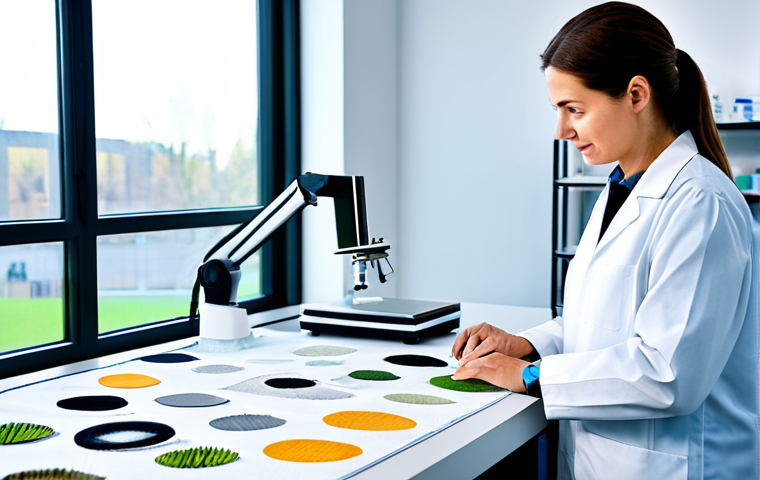
Honestly, it’s mind-boggling when you stop to think about it. We grab a trendy top, wear it a few times, and then, *poof*, it’s gone from our lives. But where does it truly go?
The answer, for an astonishing amount of clothing, is a landfill. This isn’t just a handful of old socks; we’re talking about an entire industry, fueled by fast fashion, that churns out mountains of textiles destined for waste.
I remember visiting a textile sorting facility a few years back, and the sheer scale of discarded garments was heartbreaking. It wasn’t just old, worn-out items; there were pieces with tags still on them, barely used, all piling up.
This isn’t just an aesthetic problem or a space issue in our homes; it’s a colossal environmental burden, from the resources pulled from the earth to create these fabrics, to the emissions generated during production, and finally, the slow, toxic decomposition in landfills.
My personal journey into sustainable living really kicked off when I understood this chain reaction – it felt like a moral imperative to change how I consume.
Understanding the “Take-Make-Waste” Model
The traditional linear economy is, frankly, broken, especially when applied to textiles. We extract raw materials, manufacture products, use them for a short period, and then discard them.
This “take-make-waste” model is inherently unsustainable. For textiles, it means everything from growing resource-intensive cotton to petroleum-based synthetics, dying them with chemicals, and then, more often than not, tossing them into a giant hole in the ground.
I’ve heard countless stories from people who feel guilty about their overflowing wardrobes but have no idea what to do with the items they no longer want.
This model perpetuates that cycle of guilt and waste because convenient, sustainable alternatives are often hard to find or understand.
The Environmental Footprint of Fashion’s Excess
Let’s get real about the impact. The fashion industry is a major contributor to global pollution, second only to the oil industry in some estimates. This includes enormous water consumption, particularly for cotton, and significant chemical pollution from dyeing and finishing processes that contaminate waterways.
Then there’s the microplastic shedding from synthetic fabrics like polyester and nylon, which ends up in our oceans and, eventually, our food chain. It’s a staggering thought, isn’t it?
Every time I see a piece of plastic debris on the beach, I can’t help but wonder if some of it originated from a discarded jacket or a pair of leggings.
The sheer volume of waste overwhelms current recycling infrastructure, meaning most of it doesn’t get a second chance.
Weaving a New Future: Innovations in Sustainable Fibers
The good news is that brilliant minds are hard at work, reimagining the very threads we use. Textile engineers, chemists, and innovators are pushing the boundaries, developing materials that are either inherently more sustainable or designed for easy recycling.
It’s truly inspiring to see the creativity flowing into this space. I recently got my hands on a shirt made from a blend of seaweed and wood pulp, and the texture was incredible – soft, breathable, and shockingly durable.
These aren’t just niche materials for high-fashion runways; they’re becoming viable alternatives for everyday wear, promising a drastically reduced environmental footprint.
This shift isn’t just about ‘less bad’ options; it’s about fundamentally changing the DNA of our clothing.
From Nature’s Bounty to Lab-Grown Wonders
Innovation isn’t just about finding new natural fibers; it’s about enhancing existing ones and creating entirely new materials through bio-engineering.
We’re seeing exciting developments in fibers derived from agricultural waste, like pineapple leaves or banana stems, turning what would be discarded into valuable resources.
Then there’s the fascinating world of mycelium-based leather (grown from mushrooms!) and spider silk protein, which is being lab-grown for its incredible strength and elasticity.
These materials aren’t just eco-friendly; they often boast superior properties, like enhanced breathability or water resistance, which is a win-win for consumers and the planet.
It makes me genuinely optimistic about what our clothes might be made of in just a few years.
Designing for Durability and Recyclability
Beyond the raw materials, the way we design clothes is undergoing a fundamental shift. The concept of “design for disassembly” is gaining traction, where garments are constructed in a way that makes it easy to separate different components (zippers, buttons, different fabric types) for recycling.
Think about it: a mixed-material t-shirt is notoriously difficult to recycle. But if it’s designed with single-material components or easily detachable parts, its potential for a second life skyrockets.
It’s about moving away from built-in obsolescence and towards intentional longevity and circularity, something I personally prioritize when making new purchases.
I’ve started looking for brands that clearly state their garment’s material composition and offer take-back programs.
The Alchemist’s Touch: Transforming Textile Waste
This is where the magic truly happens: turning what was once considered trash into valuable new resources. Textile recycling is far more complex than just tossing a plastic bottle into a bin; fabrics are diverse, often blended, and can be chemically treated.
However, incredible breakthroughs in both mechanical and chemical recycling are making closed-loop systems a real possibility. I’ve followed the progress of companies that can break down cotton textiles at a molecular level, removing dyes and impurities, and then re-spin them into fibers that are as good as new.
It’s like a phoenix rising from the ashes, giving garments an infinite number of lives. This is the part of the textile circular economy that truly gets me excited because it addresses the waste problem head-on.
Mechanical vs. Chemical Recycling: The Processes Unveiled
Understanding the different approaches to textile recycling helps appreciate the complexity and innovation involved.
| Recycling Method | How It Works | Typical Materials | Pros | Cons |
|---|---|---|---|---|
| Mechanical Recycling | Fibers are shredded and re-spun into new yarns. | Cotton, Wool, Polyester (single-material) | Lower energy use, less chemical input. | Fibers shorten, quality can degrade. |
| Chemical Recycling | Textiles are dissolved into monomers/polymers and regenerated. | Polyester, Cellulose (blends possible) | High-quality output, handles blends. | Higher energy use, requires specific chemicals. |
| Thermal Recycling | Waste is incinerated for energy recovery. | Mixed waste, non-recyclables | Waste volume reduction, energy generation. | Air pollution, not true material recycling. |
Each method has its place, but the push is definitely towards chemical recycling, especially for those challenging mixed-fiber garments that mechanical processes struggle with.
The investment and research going into these technologies are immense, driven by the sheer necessity to find scalable solutions.
Overcoming Blends and Dyes: The Next Frontier
The biggest hurdle in textile recycling? Blended fabrics. A cotton-polyester blend, for instance, is a nightmare for traditional recycling because the two fibers require completely different processes.
But now, innovative technologies are emerging that can separate these blends or even process them together. Similarly, removing dyes without damaging the fibers has been a challenge, but advancements in enzyme-based processes and supercritical fluid extraction are paving the way for cleaner, more efficient recycling.
It feels like we’re finally cracking the code on some of the industry’s toughest challenges, moving closer to a true circular economy where nothing is truly wasted.
The Circular Economy: Beyond Just Recycling
Recycling is a critical piece of the puzzle, but the ultimate goal is a fully circular economy for fashion. This means designing products that can be perpetually reused, repaired, and remanufactured, minimizing virgin resource extraction and waste generation.
It’s about shifting our entire mindset from consumption to stewardship, fostering a system where materials retain their value and never become waste. I’ve been actively exploring rental services for special occasions and consciously mending my clothes instead of immediately replacing them.
These small individual actions contribute to a larger movement.
Product-as-a-Service: Rent, Repair, Resell
We’re seeing a fascinating evolution in business models, moving away from outright ownership. Rental platforms for everyday wear and special occasions are gaining popularity, reducing the need for individual purchases.
Brands are also offering robust repair services, encouraging customers to extend the life of their garments rather than discarding them. Patagonia, for example, has built a reputation around this.
The resell market, fueled by platforms like ThredUp and Poshmark, has exploded, giving clothes a second, third, or even fourth life in someone else’s wardrobe.
This “product-as-a-service” model changes the dynamic – companies have an incentive to produce durable, high-quality items if they retain ownership or facilitate their extended lifecycle.
Extended Producer Responsibility (EPR) and Policy Drivers
The heavy lifting can’t just be on the consumer; systemic change requires policy. Extended Producer Responsibility (EPR) legislation is gaining traction globally, making brands financially and/or physically responsible for the entire lifecycle of their products, including collection and recycling.
This means textile companies are now incentivized to design for durability and recyclability from the get-go, as they will bear the cost of disposal if their products end up in landfills.
It’s a powerful driver for innovation and sustainable practices, forcing accountability in a way that voluntary initiatives often can’t. I’m hopeful that more countries will adopt and strengthen EPR laws, making it a level playing field for all fashion brands.
My Personal Shift: Embracing Sustainable Fashion
It’s easy to feel overwhelmed by the sheer scale of the fashion waste problem. Believe me, I’ve been there. But what I’ve learned on my journey is that every conscious choice, no matter how small, contributes to a bigger shift.
My own wardrobe has transformed over the past few years, moving away from impulse buys and towards thoughtful investments. It’s a continuous learning process, and sometimes I still slip up, but the intention is always there.
This personal experience has not only made me feel better about my consumption but has also opened my eyes to the incredible innovation happening in the industry.
Curating a Conscious Closet: My Top Tips
It all starts with intention. For me, that means a few key principles:
1. Shop Your Own Closet First: Before buying anything new, I challenge myself to create new outfits from what I already own.
You’d be surprised what forgotten gems you find! 2. Quality Over Quantity: I’ve shifted from buying five cheap tops to investing in one well-made, durable piece that will last for years.
The cost-per-wear often ends up being lower. 3. Embrace Secondhand: My favorite finds often come from thrift stores or online resale platforms.
It’s a treasure hunt, and it keeps clothes out of landfills. 4. Care for Your Clothes: Proper washing, air-drying, and mending simple tears significantly extend a garment’s life.
I’ve even learned basic sewing skills, which is incredibly empowering. 5. Support Sustainable Brands: When I do buy new, I research brands that prioritize ethical production, sustainable materials, and circular practices.
It’s a way of voting with my wallet.
The Emotional Reward of Sustainable Choices
There’s a genuine emotional satisfaction that comes with making conscious choices. When I wear something I know was made ethically, from recycled materials, or that I found secondhand, it just *feels* better.
There’s no guilt hanging over my head, no lingering worry about where it will end up. It’s a sense of alignment between my values and my actions, and that’s incredibly empowering.
My personal journey has shown me that sustainable fashion isn’t about deprivation; it’s about thoughtful consumption, creativity, and finding joy in truly cherished pieces.
It’s about building a wardrobe that makes me feel good, inside and out.
The Future is Woven: A Call to Action and Innovation
The challenges in textile waste are immense, but so are the opportunities. We’re at a pivotal moment where consumer awareness, technological innovation, and policy changes are converging to create real impact.
The journey towards a fully circular textile economy is complex, demanding collaboration across designers, manufacturers, recyclers, and consumers. What gives me immense hope is seeing how rapidly solutions are evolving, driven by a growing understanding of our planet’s limits and the incredible potential of human ingenuity.
We’re not just talking about incremental improvements anymore; we’re talking about systemic transformation.
The Role of Artificial Intelligence in Material Recovery
It’s fascinating to consider how cutting-edge technologies are stepping in to tackle this age-old problem. Artificial intelligence is emerging as a game-changer in material sorting and recovery.
Imagine a system that can accurately identify different fiber types, even in mixed blends, at lightning speed. This level of precision is crucial for efficient recycling, enabling higher purity outputs for new materials.
AI can also optimize recycling processes, predict material flows, and even help designers choose materials that are easier to recycle down the line. It’s about bringing unparalleled efficiency and intelligence to what was once a very manual and often inaccurate process, unlocking new levels of resource efficiency.
Collective Impact: Every Thread Counts
Ultimately, the future of fashion is a collective endeavor. As consumers, our purchasing decisions hold significant power. Supporting brands committed to sustainability, demanding transparency, and embracing circular practices like repairing and reselling send clear signals to the industry.
For businesses, it means innovating materials, redesigning processes, and investing in recycling infrastructure. For policymakers, it means creating supportive legislation that incentivizes circularity and holds polluters accountable.
Every fiber, every garment, every choice contributes to the tapestry of our future. Let’s make sure it’s a future woven with intention, innovation, and unwavering commitment to a healthier planet.
Closing Thoughts
As we wrap up this deep dive into fashion’s circular journey, it’s clear that the threads connecting us to our planet are more intricate than we often realize. But instead of feeling daunted, I hope you feel empowered. We’re witnessing a profound transformation in how our clothes are made, used, and recycled, driven by both ingenious minds and growing consumer demand.
My own path has shown me that sustainable fashion isn’t about perfection; it’s about progress, one mindful choice at a time. Every decision, from how we shop to how we care for our garments, contributes to a more resilient, respectful fashion ecosystem.
The future of our wardrobes is being woven right now, and it’s a future where innovation, responsibility, and beauty can truly coexist. Let’s continue to be part of this vital conversation, advocating for change and embracing the exciting possibilities that lie ahead for a truly circular fashion world.
Useful Information to Know
1. Before discarding old clothes, always check with your local council or charities. Many areas have specific textile recycling bins or programs for items that can’t be donated for reuse. Websites like RecycleNow in the UK or Earth911 in the US can offer localized information.
2. Familiarize yourself with common fabric compositions. Single-fiber garments (100% cotton, 100% polyester) are generally easier to recycle than blends. This knowledge empowers you to make more recyclable choices when buying new items.
3. Look for certifications like GOTS (Global Organic Textile Standard), Fair Trade Certified, or OEKO-TEX Standard 100 when purchasing. These labels indicate that a product meets certain environmental and social criteria, helping you identify truly sustainable brands.
4. Proper care significantly extends a garment’s life. This includes washing clothes less frequently, using cold water, air-drying when possible, and learning simple mending techniques like sewing on a button or repairing a small tear. Small efforts make a big difference.
5. For special occasions or to refresh your everyday style, consider renting clothes instead of buying. Also, utilize online resale platforms (e.g., Poshmark, Depop, Vinted) or local consignment stores to give your unwanted clothes a new life and find pre-loved treasures.
Key Takeaways
The fashion industry’s linear “take-make-waste” model is environmentally unsustainable, contributing to massive pollution and waste. Innovations in sustainable fibers, from natural alternatives to lab-grown materials, are reshaping the industry, while design for durability and recyclability aims to extend garment lifespans. Breakthroughs in mechanical and chemical recycling are transforming textile waste into new resources, tackling complex issues like blended fabrics. The ultimate goal is a circular economy, emphasizing reuse, repair, and resale through models like “product-as-a-service” and supported by policy drivers like Extended Producer Responsibility. Embracing conscious consumption—shopping mindfully, caring for clothes, and supporting sustainable brands—is crucial for individual impact. AI is poised to enhance material recovery, underscoring that collective action, driven by innovation and informed choices, is essential for a truly sustainable fashion future.
Frequently Asked Questions (FAQ) 📖
Q: You mentioned textile recycling is “far more complex than it sounds.” What makes it such a tough nut to crack compared to, say, recycling plastic bottles or aluminum cans?
A: Oh, tell me about it! It’s easy to think, “just throw it in the bin,” but textiles are a whole different beast. From what I’ve seen, the real headache comes from the sheer variety of materials and blends.
You’re not just dealing with one type of plastic; you’ve got cotton mixed with polyester, spandex, rayon, all in one garment, often dyed with complex chemicals.
Trying to separate those fibers at a molecular level so they can actually be reused efficiently? That’s where the science gets incredibly tricky. Plus, zippers, buttons, trims – they all have to be removed first.
It’s why so much of what we donate still ends up incinerated or in landfills; the infrastructure just isn’t there yet to handle that complexity on a massive scale.
It’s a logistical and chemical nightmare, frankly.
Q: The text touches on Extended Producer Responsibility (EPR) and
A: I revolutionizing material recovery. Could you elaborate on how these are practically impacting the industry and what we might see as consumers? A2: Absolutely!
This is where things get really exciting, and honestly, a bit of a game-changer. EPR, to me, is about shifting the burden of waste management back onto the brands that produce the clothes.
Instead of us, the consumers, or local councils footing the entire bill for disposal, companies are now being held accountable for the entire lifecycle of their products.
I’ve seen some brands start to offer take-back programs or even design clothes with future recycling in mind from the get-go. And AI? That’s the real wizardry in material recovery.
Imagine trying to sort millions of garments by fiber type, color, and contaminant – a human simply can’t do it quickly or accurately enough. AI-powered sorting systems can use spectral analysis to identify fabric compositions at lightning speed, vastly improving the purity of recycled feedstock.
It means less waste, higher quality recycled materials, and ultimately, more truly circular products for us to buy. It’s like the industry is finally getting smart about its own mess.
Q: Beyond just “reduce, reuse, recycle,” what does a “fully circular economy” for textiles actually look like, and how close are we to achieving it?
A: That’s the million-dollar question, isn’t it? For textiles, a truly “fully circular economy” means moving past the linear ‘take-make-dispose’ model entirely.
It’s not just about donating your old jeans; it’s about designing clothes that are either biodegradable or fully recyclable into new, high-quality garments, essentially closing the loop.
I’ve been following some incredible innovations where new fibers are being developed from things like agricultural waste or even old plastic bottles, then engineered to be easily broken down and remade.
We’re seeing companies experimenting with ‘product-as-a-service’ models where you lease clothes instead of owning them, and they’re returned to the brand for repair or recycling at the end of their use.
Are we there yet? Not entirely, no. But with the breakthroughs in molecular recycling and the growing pressure from consumers and regulations, I genuinely feel we’re standing at the edge of a massive shift.
It’s not a pipe dream anymore; it’s becoming a tangible reality driven by necessity and ingenuity. It’s exciting, but there’s still a lot of hard work ahead to scale these solutions globally.
📚 References
Wikipedia Encyclopedia
구글 검색 결과
구글 검색 결과
구글 검색 결과
구글 검색 결과
구글 검색 결과
